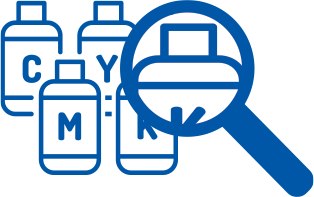What the heck is Vector & Raster?
We don’t want to bore you with technicalities, but this one is pretty important. There are two primary types of digital graphics, vector and raster. The distinction between these two graphic formats can play a big role in print quality. Each format has its strengths and weaknesses, making them each suitable for specific applications.
Vector: Power of Scalability
Vector graphics are composed of points, lines, and curves, allowing for infinite scalability without losing quality. This is because math formulas define the relationships between these elements, ensuring that they remain crisp and sharp at any size. One of the primary advantages of vector graphics is their scalability and editability. They’re ideal for creating logos, icons, and illustrations, as well as for design projects that require clean lines and precise shapes.
Vector graphics do have limitations. They struggle with intricate details and complex textures that are better handled by raster graphics. Effects like shadows and gradients can be a challenge to achieve nicely with vectors.
Vector
When made larger:

Raster: Realism & Detail
On the other hand, raster graphics are made up of individual pixels. Each pixel contains information about color and tone, and are arranged into a grid that creates your final image. Raster graphics are used to capture intricate details, textures, and effects like shadows and gradients. Making them the preferred choice for photographs, art, and anything with a high level of realism.
Raster graphics suffer from a crucial drawback, however. They are resolution-dependent. This means that when enlarging a raster image you will lose quality as individual pixels become larger, creating a jagged, blurry, and pixelated appearance. To avoid this, raster images need to be created and saved at high resolutions from the get-go.
Raster
When made larger:

 Raster images can not easily be converted to Vector. It’s important that your files are correctly designed and set-up.
Raster images can not easily be converted to Vector. It’s important that your files are correctly designed and set-up.
Choosing the Right Format
Choosing between vector and raster depends on your design needs. If you’re working on a project that requires scalability, precision, and clean lines, vector graphics are the way to go.
If you’re dealing with photographs, digital art, or a project that requires intricate textures and realistic effects, raster graphics will serve you best. Just remember to start with a high-resolution image.
By considering the strengths and limitations of each format, you can make informed decisions that lead to high-quality and visually appealing creations.
